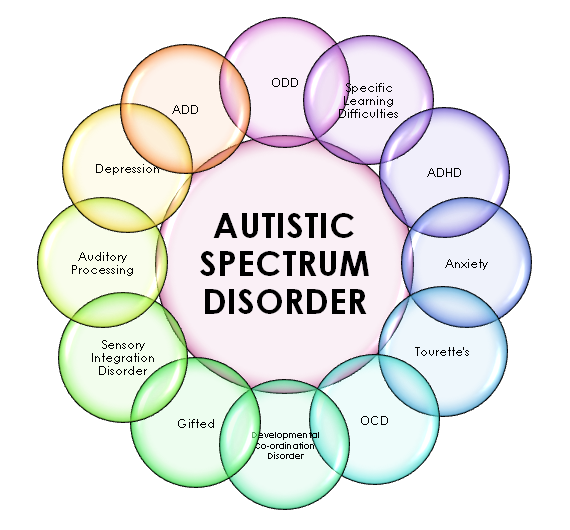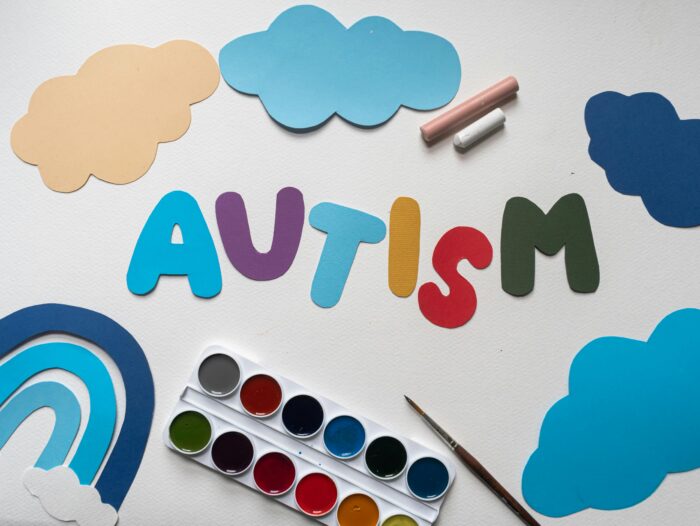Discovering Autism: Strategies for Reliable Communication and Interaction
Effective communication and interaction with individuals on the autism spectrum demand a detailed understanding of their distinct needs and choices. The complexities of these approaches disclose further factors to consider that merit expedition, particularly in just how they can be adapted to individual experiences and varied contexts.
Understanding Autism Range Disorder
Autism Spectrum Problem (ASD) encompasses a variety of neurodevelopmental problems characterized by difficulties in social communication, communication, and repeated actions. The term "spectrum" reflects the diverse indications and varying degrees of extent experienced by individuals with ASD. While some may exhibit substantial impairments, others may show high-functioning attributes, allowing for higher freedom in day-to-day live.
The onset of ASD normally takes place in early youth, with indications usually recognizable by age two. Early indications may consist of delayed speech advancement, minimal eye get in touch with, and difficulties in comprehending social signs. The specific etiology of ASD remains vague, study suggests a mix of genetic and ecological variables plays a crucial role in its development.
As a result, interventions and assistance tailored to specific demands are vital for fostering interaction and social skills. Identifying the complexity of ASD is vital for advertising understanding, approval, and efficient strategies that promote significant interactions with people on the range.

Relevance of Clear Interaction
Efficient communication is crucial for fostering understanding and connection, particularly for people with Autism Range Disorder (ASD) Clear interaction not only assists in social communications however also improves the person's ability to share their emotions, ideas, and needs. For people with ASD, the nuances of language can frequently be testing; as a result, utilizing simple and unambiguous language is important.
In addition, clear communication helps in reducing stress and stress and anxiety that may develop from misunderstandings. When messages are communicated in a direct and constant way, people with ASD are better outfitted to interpret details accurately, which can substantially enhance their social interaction and involvement in different setups.
Establishing routines and making use of visual assistances can even more bolster clear communication. These methods supply people with foreseeable structures that assist understanding and retention of information. Furthermore, actively being and paying attention patient during communications advertises a supportive atmosphere where people with ASD really feel valued and recognized.
Ultimately, prioritizing clear interaction not just empowers individuals with ASD however additionally cultivates more meaningful connections with their peers, caregivers, and the bigger community, paving the method for collaborative connections and comprehensive communications. - autism
Non-Verbal Interaction Methods
Interaction prolongs past words, and for people with Autism Range Condition (ASD), non-verbal hints play a significant role in interactions. Non-verbal communication techniques can include faces, motions, body movement, and eye get in touch with, all of which act as important elements for communicating intents and feelings.
Comprehending and translating these non-verbal signals can improve interactions with individuals with ASD. A cozy smile or open pose can produce a welcoming atmosphere, encouraging involvement. In a similar way, utilizing visual help-- such as image cards or icons-- can connect communication gaps and aid share messages much more efficiently.
It is also important to be conscious of personal room, as people with ASD may have different convenience levels concerning closeness. Observing their reactions to physical closeness can notify appropriate changes.

Producing Supportive Settings
Developing a supportive setting is important for fostering favorable interactions and improving the health of individuals with Autism Range Problem (ASD) Such environments can considerably lower stress and anxiety and create a feeling of security, permitting people to share themselves much more freely.
To accomplish this, it is important to take into consideration sensory sensitivities that people with ASD may experience. Changing the physical area to consist of soft lighting, marginal background noise, and comfy seating can produce a soothing atmosphere. In addition, using constant regimens and clear visual routines can aid individuals prepare for shifts and reduce unpredictability, more promoting comfort.
Social areas ought to be structured to lessen frustrating stimulations while providing chances for involvement in recommended activities. Assisting in areas marked for silent time can also work as a haven during moments of anxiety. Notably, including elements of option equips individuals, permitting them to exercise agency in their atmosphere.

Encouraging Social Communications
Fostering social interactions amongst individuals with Autism Range Problem (ASD) calls for deliberate approaches that prioritize comfort and engagement. Developing predictable routines can help in reducing stress and anxiety, making social settings much more friendly. Creating structured atmospheres with specified duties and functions permits individuals to engage without the overwhelming stress of disorganized social dynamics.
Integrating rate of interests and staminas into social activities can function as a catalyst for interaction. Organizing group activities around shared pastimes or subjects of attraction can facilitate natural conversations and connections. Furthermore, using aesthetic assistances, such as pictorial schedules or social scripts, can aid in comprehending social hints and expectations.
Modeling proper social habits is essential - autism. Peers and grownups must show efficient interaction methods, including active listening and turn-taking. Role-playing scenarios can also offer a safe space for individuals to exercise these abilities
Last but not least, cultivating peer connections with inclusive practices is vital. Motivating inclusive playdates or team getaways can produce possibilities for socializing in a comfortable setting. By applying description these caretakers, approaches and teachers can dramatically boost social interactions for individuals with ASD, advertising their general social growth and wellness.
Conclusion
To conclude, reliable communication and communication techniques are crucial for supporting people with Autism Spectrum see post Condition. Emphasizing clear language, including non-verbal signs, and developing foreseeable routines substantially enhance interaction and lower anxiety. Producing helpful environments promotes secure social interactions, while motivating shared passions facilitates significant links. Ultimately, these techniques encourage individuals with autism to navigate social landscapes, promoting their total health and enabling the advancement of enduring partnerships.
Effective communication and interaction with individuals on the autism spectrum necessitate an extensive understanding of their distinct requirements and preferences. Clear communication not only helps with social interactions but likewise improves the individual's capability to reveal their feelings, thoughts, and needs.Fostering social interactions among individuals with Autism Range Problem (ASD) needs deliberate techniques that prioritize convenience and involvement. By applying these caretakers, teachers and techniques can substantially improve social interactions for people with ASD, promoting their total social advancement and well-being.
In verdict, efficient communication and communication techniques are essential for find out here now sustaining individuals with Autism Range Condition.